Why You Should Avoid Turtlenecks After a Fraxel Laser, and Other Skin-Healing Tips
Thespotlyte | July 27, 23

About six years ago, my face was in desperate need of laser skin resurfacing. I’d developed acne, presumably from years of exposure to dirty, pollution-ridden New York City air.
Eventually, my breakouts and inflammation subsided, but my cheeks were left riddled with visible acne scars. So, in order to combat my uneven complexion, I visited my board-certified dermatologist in the hopes of finding a solution. Together, we decided that the Fraxel® laser was the best option.
It’s important to note that there’s a difference between Fraxel lasers. That winter, I went through three rounds of Fraxel Re:pair®, an ablative treatment that stimulates collagen and elastin, spaced four to six weeks apart. Numbing cream made the treatment itself totally tolerable; my six-day recovery period post-treatment (three times over!), however, was not exactly pain-free. Thankfully, I discovered a few tips, tricks, and products that eased the Fraxel Re:pair recovery period. I also learned what to avoid.
If I were to do a Fraxel laser again — now that my deep scars are gone — I might instead opt for Fraxel Re:store®, which is similar to non-ablative lasers, meaning it’s gentler and has fewer recovery days. “Traditionally, a series of three or four Fraxel Re:store treatments would be performed one month apart, but even a single treatment does have some benefit for those who can’t do a full series right away,” says Jessica Krant, MD, MPH, a board-certified dermatologist at the Laser & Skin Surgery Center of New York®. Dr. Krant informed me that immediately after treatment I should expect my face to be red and a little bit swollen, like a bad sunburn. Swelling will likely occur and may get a bit worse over a few hours, and then go down within a day or two.
In preparation for my next Fraxel laser treatment, I researched and asked the pros about the best products to use and what to avoid afterward. Of course, consult with your doctor before opting for any kind of Fraxel laser and when starting a new regimen.
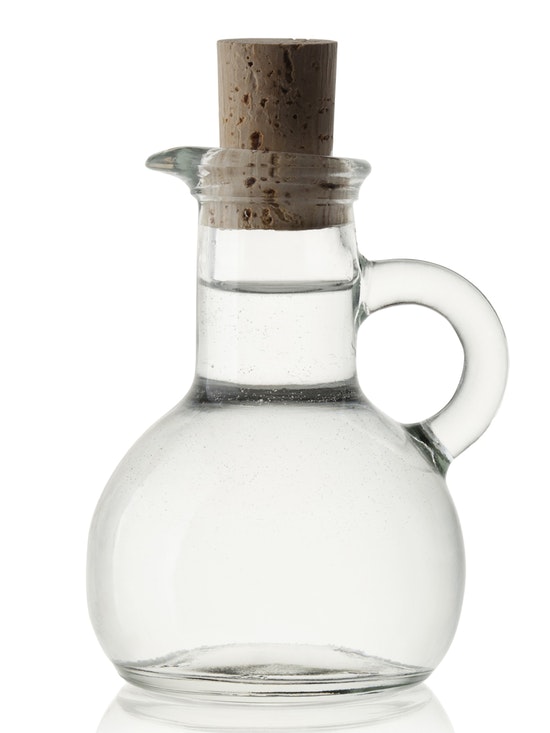
THINGS YOU SHOULD USE AFTER A FRAXEL LASER #1:
Vinegar
Traditional cleansers might feel too harsh on your raw, open skin after a Fraxel laser. One gentler, all-natural alternative is a vinegar soak, comprised of one part white vinegar diluted in five parts warm water, which acts as a mild antiseptic and cleansing agent, explains Dr. Krant. This solution can be applied via a washcloth draped over the skin for four to five minutes. “Vinegar soaks help to decrease bacteria on the skin and soften crusts post-Fraxel to help with skin cell turnover,” says Neal Schultz, MD, a board-certified dermatologist in Manhattan. However, he says, “Every provider will have their own post-Fraxel recovery protocol that you should follow after your treatment.” Dr. Schultz recommends using a gentle, hydrating gel cleanser such as Neutrogena® Hydro BoostTM Hydrating Cleansing Gel ($8).
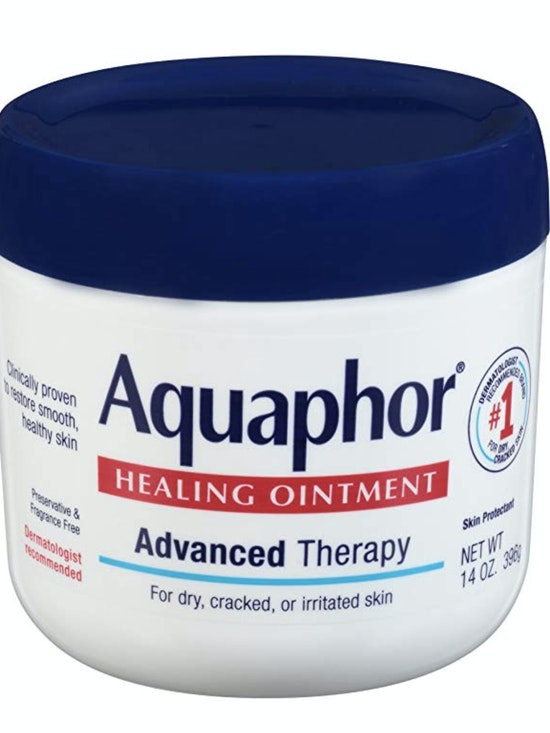
THINGS YOU SHOULD USE AFTER A FRAXEL LASER #2:
Aquaphor®
The Fraxel laser left my skin broken and bleeding in some areas, which is totally normal — after all, it causes microscopic injuries. After cleansing, applying a liberal amount of Aquaphor Healing Ointment ($13) to the surface of my skin created a moisturizing barrier. This is important because without a layer of product, your skin in its sensitive state is exposed to the outside world — ahem, bacteria and potential infection.
Pro tip: You might want to cover your bed pillow with an old T-shirt if you sleep on your stomach or side, so you don’t have residue — a.k.a. a waxy, wet mess — on your pillowcase. Of course, you’re welcome to change your pillowcase every night, too, but changing a T-shirt might be easier, as you likely own more cotton tees than pillowcases.
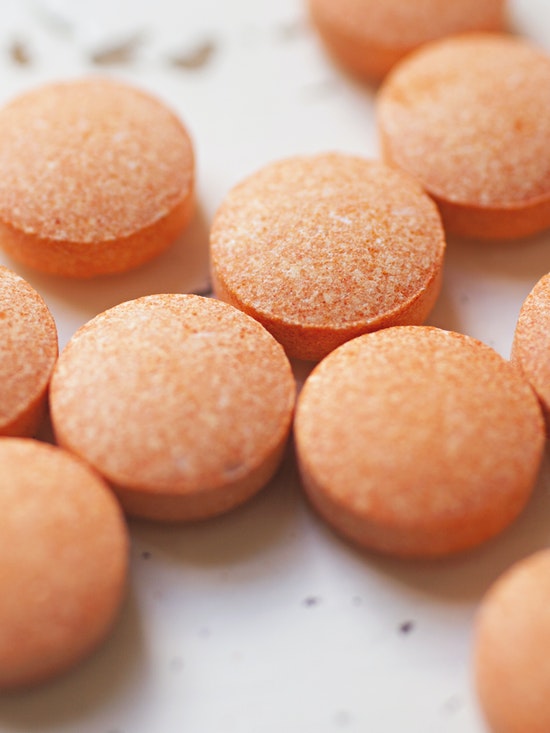
THINGS YOU SHOULD USE AFTER A FRAXEL LASER #3:
Vitamin C
Vitamin C helps support collagen production, and it is recommended that it’s used or ingested post-treatment. “The purpose of the Fraxel treatment is to induce new collagen production, and this process occurs over several weeks to months,” reiterates Dr. Schultz. “Taking vitamin C supplements may help this process. Oral supplements are not necessarily better than topicals, but rather can be used in conjunction with topicals.” Dr. Krant adds that eating a well-balanced diet with plenty of fruit and leafy green vegetables should work just as well, too.
EDITOR’S NOTE
As always, talk to your doctor before starting any new supplement.
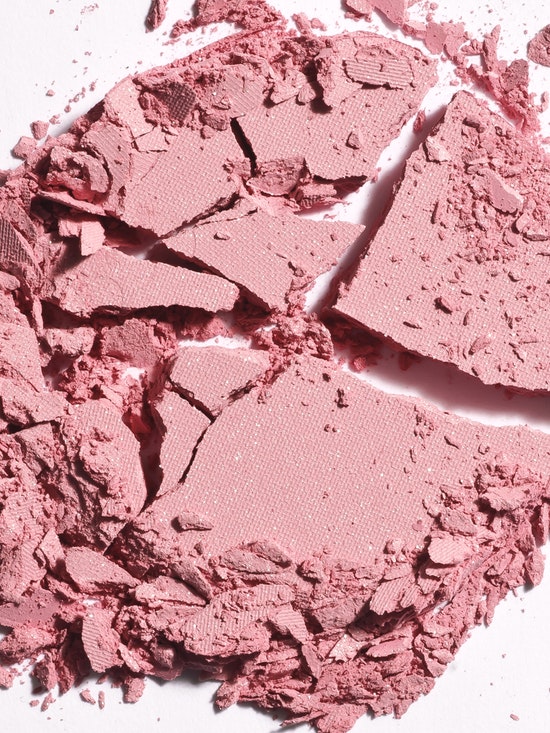
THINGS YOU SHOULDN’T USE AFTER A FRAXEL LASER #1:
Makeup
With a faceful of balm, blood, and broken skin for a few days following a Fraxel laser treatment, makeup is not recommended. Dr. Krantz says you don’t want makeup causing an infection in your microscopic injuries or blocking the release of unwanted debris. Dr. Schultz seconds that notion. “After Fraxel treatment, there are small holes in the skin,” he explains. “It is essential to protect the skin and avoid introducing any product that may be irritating or contain bacteria that may lead to a skin infection.” While going makeup-free for several days could sound like a major challenge, it’s worth doing in the name of healthy skin. (See how I went a month without makeup for my complexion’s health here.)
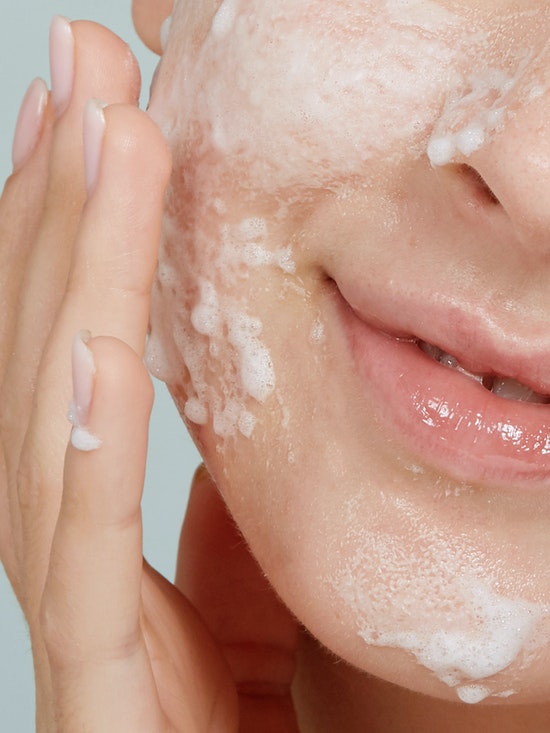
THINGS YOU SHOULDN’T USE AFTER A FRAXEL LASER #2:
Exfoliants
Harsh topicals and chemical exfoliants should be avoided for about a month after the treatment, so the skin can heal. The treatment itself has primed the skin to do its own recovery work, says Dr. Krant. This includes common ingredients like glycolic acid and retinol. Physical exfoliants should not be used at this time either. “The newly forming skin you will have after Fraxel is very sensitive, and any product that can potentially cause inflammation or irritation should be avoided,” warns Dr. Schultz.
EDITOR’S NOTE
Retinol shouldn’t be used by women who are pregnant, considering getting pregnant, or nursing. Please consult with your doctor before use.

THINGS YOU SHOULDN’T USE AFTER A FRAXEL LASER #3:
Turtlenecks and Tight Tops
While getting dressed every morning (and night), I found it easiest to avoid clothing that might brush up against my sensitive face! The pieces of clothing that made the most sense during my Fraxel laser downtime were button-down shirts and wrap dresses, which helped me avoid pulling fabric over my head.
Ultimately, recovering from a laser treatment is not the most convenient or comfortable experience — but, as my now non-existent scars and I can attest, six days of downtime (18 total after three rounds) is certainly worth it in the long run. And, now that my scars have subsided, I can rest assured knowing the next time I go back for another round it’ll be with a less intense recovery period!






